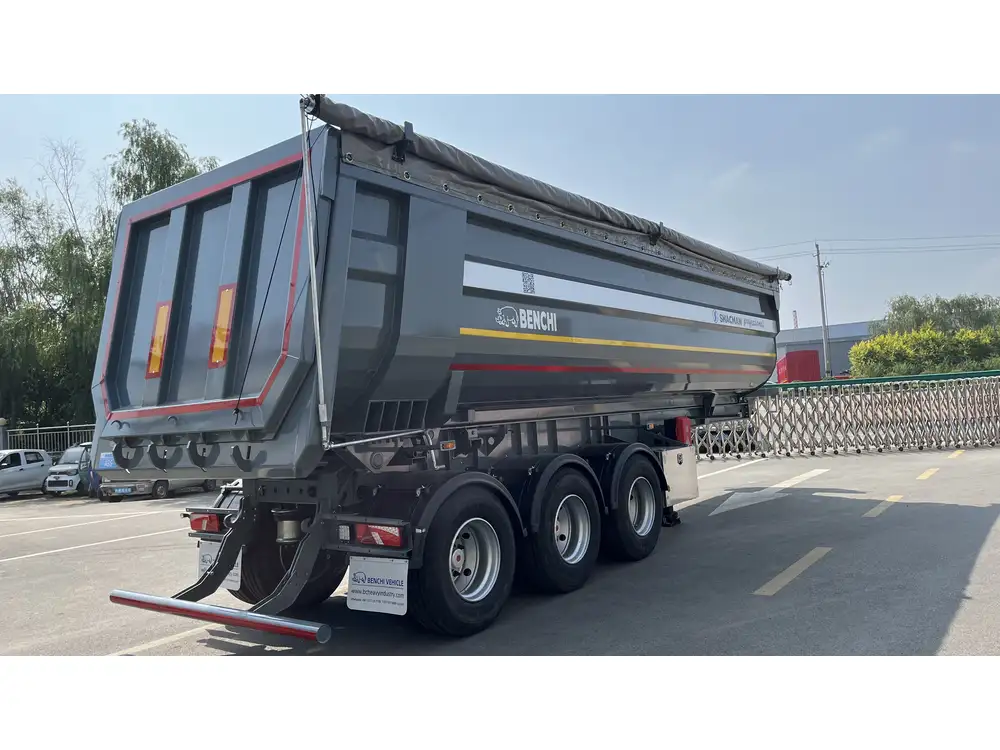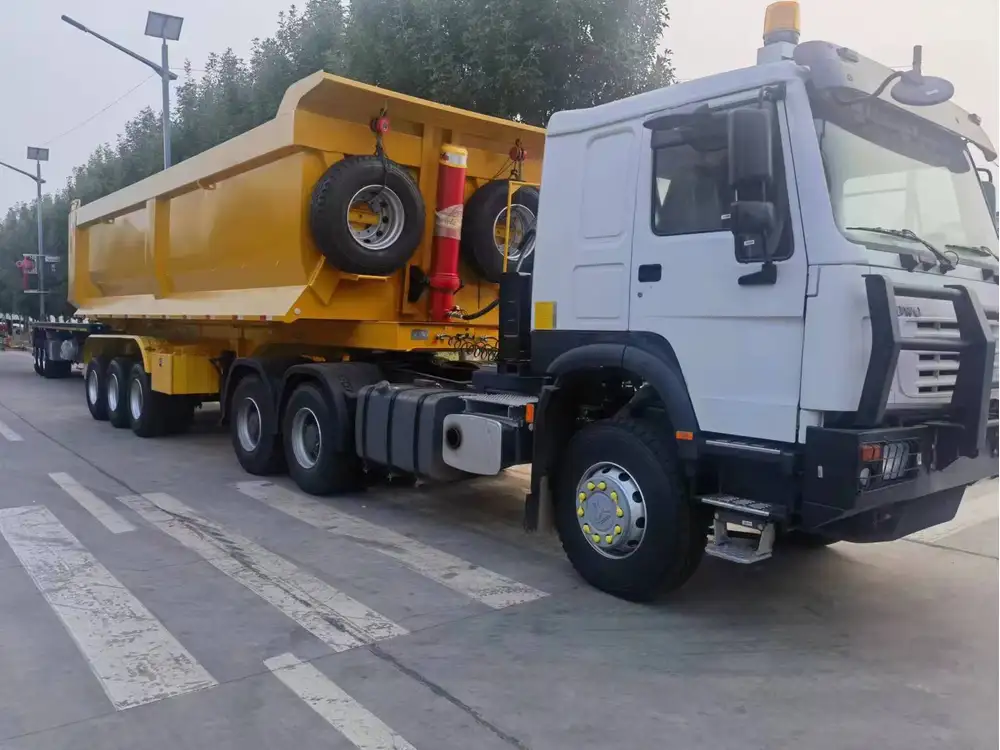When it comes to the transportation industry, the height of a tractor trailer is not just a number; it’s a crucial aspect that influences various logistical, regulatory, and safety considerations. As manufacturers, we provide vital insights into this subject, which is essential for operators, fleet managers, and logistics companies.
What is the Standard Height of a Tractor Trailer?
The height of a standard tractor trailer can vary significantly based on multiple factors, including the truck’s configuration, load, and manufacturer specifications. Generally, the average height of a tractor trailer ranges between 13.5 feet (approximately 4.1 meters) and 14.5 feet (about 4.4 meters) from the ground to the top of the cargo area.
| Component | Height (Feet) | Height (Meters) |
|---|---|---|
| Average Tractor Trailer | 13.5 – 14.5 | 4.1 – 4.4 |
| Standard Container (40′) | 8.5 | 2.6 |
| Standard Reefer Trailer | 13.6 | 4.1 |
Factors Influencing Tractor Trailer Height
Trailer Type
- Flatbed Trailers: Typically around 5 feet high, these trailers have less overall height but require assessment based on cargo.
- Refrigerated Trailers (Reefers): Slightly taller due to insulation and refrigeration units, averaging around 13.6 feet.
- Tank Trailers: Among the tallest, especially those designed for transporting liquids.
Load Configuration
- The height changes significantly based on what is being transported. For instance, taller cargo demands the need for specialized height considerations to avoid clearance issues.
Regulatory Standards
- Federal regulations typically cap the maximum height to 13.5 feet without special permits, but regional or state regulations may vary.
Manufacturer Specifications
- Different manufacturers might design trailers with varying heights for marketing differentiation or specialized functionalities.

Legal Height Considerations
Understanding the legal constraints regarding the height of tractor trailers is crucial for compliance and operational efficiency:
- Federal Regulations: Generally maintain a maximum height of 13.5 feet for interstate travel. Exceeding this may result in fines or the need for special permits.
- State Regulations: Variations can occur. Some states permit heights of up to 14.5 feet, and operators must know state-specific laws to avoid penalties.
- Bridge Clearance: Operators should always consider bridge clearances along their routes, as many bridges are designed with an 8.5-foot clearance, causing issues for taller loads.
Importance of Knowing Tractor Trailer Height
Safety Compliance
- Ensuring that trailers do not exceed legal heights is not just a matter of legality but also safety. Overheight loads increase the risk of accidents, particularly in urban areas with low overpasses or tree branches.
Insurance Issues
- In case of accidents involving overheight vehicles, insurance claims may be denied if the vehicle is found to be in violation of height regulations, costing companies significant losses.
Operational Efficiency
- Knowing the height helps fleet managers optimize routes to avoid hazards and restrictions that could delay shipments.
Common Questions Regarding Tractor Trailer Heights

How is Tractor Trailer Height Measured?
Height is typically measured from the ground to the top of the load. To ensure accuracy, it is best to measure at the trailer’s peak with the cargo loaded, as this reflects the true height in transit.
Can Tractor Trailers Be Modified for Height?
Yes, in certain cases, modifications can be made to adjust the height of trailers. This might include:
- Custom-designed trailers for specific cargo.
- Ramps or lift systems, though these alter the intended use of the trailer.
What Happens if a Tractor Trailer is Overheight?
Being overheight can lead to:
- Fines and penalties from regulatory authorities.
- Impairment of safety, leading to potential accidents.
- Route changes, resulting in unnecessary detours or delays.

How Do Load Restrictions Affect Heights?
Certain loads may demand specific handling equipment, which can alter the necessary height for safe shipping. For example, heavy machinery often requires a flatbed trailer that can safely accommodate the load height when maneuvering.
Conclusion: Navigating the World of Tractor Trailer Heights
In the vast and complex landscape of the trucking industry, the height of a tractor trailer is a key factor that affects various aspects of logistics, safety, and efficiency. Understanding the intricacies of tractor trailer height, including regulations, types of trailers, and load considerations, is essential for manufacturers, fleet managers, and operators alike.
In summary, this knowledge arms operators with the insights needed to navigate their responsibilities while ensuring compliance, enhancing safety, and maximizing operational efficiencies. Proper planning and adherence to regulations surrounding tractor trailer height is not merely a suggestion; it is a necessity for success in today’s competitive transport landscape.
For anyone involved in the transportation of goods, taking the time to understand the implications of tractor trailer height can prevent unnecessary complications, safeguard assets, and streamline logistical operations.
By keeping abreast of the various factors at play — from federal regulations to the specifics of your vehicle and loads — you reinforce your industry expertise and position yourself for success as a pivotal player in the supply chain.



